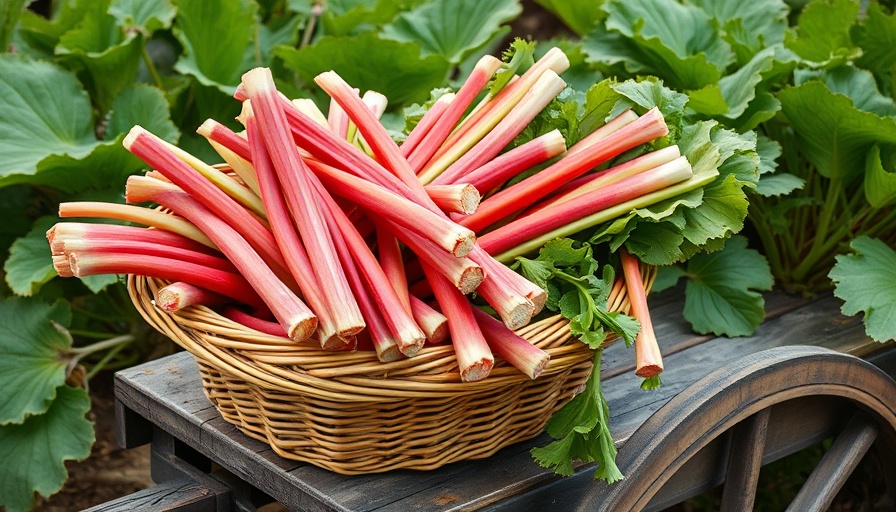
Harvesting Rhubarb: A Right Twist for a Bountiful Future
The garden's allure is often brought to life with vibrant rhubarb stalks, hinting at delightful dishes that evoke memories of summer flavors. However, it’s essential to approach harvesting rhubarb with care—using a special technique—and understanding the plant's needs to ensure its longevity and vitality in your garden.
Understanding Rhubarb: When to Harvest
Rhubarb thrives with patience and knowledge. First-time growers must allow their plants up to two years to establish themselves before harvesting. In the third year, gardeners can carefully take one-third of the stalks. This gradual approach fosters a thriving plant that will yield for many years. Ideal harvesting months extend from May through June, as the bright, colorful stalks reach the optimal length of 7 to 15 inches and the leaves unfurl fully.
The Twist that Makes a Difference
Unlike most fruits and vegetables, rhubarb requires a unique touch. To harvest, firmly grasp a mature stalk near its base. The technique involves twisting the stalk to the side while pulling gently—this action allows the stalk to cleanly separate from the root. This careful method avoids any damage, ensuring your rhubarb can produce again next season. Each harvest should also include leaving behind a minimum of two stalks to support the plant's ongoing health, demonstrating that responsible care yields ongoing rewards.
Does Harvesting Encourage Growth?
Gardening enthusiasts often ask if harvesting rhubarb leads to increased future growth. The answer is a resounding yes. When harvested correctly, often taking care to leave behind younger, smaller stalks, rhubarb can produce for over a decade. This aligns with a broader trend within sustainable gardening practices—focusing on cultivation methods that enhance a plant's lifecycle and productivity.
Harvesting Rhubarb: Yes or No on Cutting?
A common misconception among novice gardeners is the notion that cutting rhubarb is acceptable. This is where many make the mistake! Whether in gardens or local markets, the principle remains pure: never cut rhubarb stalks merely for convenience. Pulling them ensures a healthier plant and promotes effective growth. Every stalk needs to be collected gently by hand.
Rhubarb Regrowth 101
Choosing to harvest thoughtfully not only encourages regrowth but also paves the way for future harvests. A healthy rhubarb plant provides an opportunity for delightful pies, chutneys, and jams in subsequent seasons. If your stalks appear thin during the harvesting process, it indicates they need a break—pause your harvesting to allow recovery. Rhubarb is a resilient plant, but it responds best to gentle stewardship.
Rhubarb in the Kitchen: Beyond the Garden
Once harvested, incorporating rhubarb into your cooking showcases its versatility. From pies to roasted dishes, its tartness can elevate desserts and savory meals alike. Engage with local culinary groups to exchange recipes and tips on maximizing produce from your backyard. Community swaps not only provide delicious options but foster connections among local chefs!
Additional Gardening Tips for Success
As you cultivate your gardening journey, consider applying organic gardening practices. Use natural compost, companion planting with herbs, and organic pest control to enhance the overall health of your garden. Join forums or workshops within local gardening clubs to gain exclusive insights and troubleshooting tips. A community approach often leads to shared experiences, where seasoned gardeners offer advice to novices.
Conclusion: Embrace the Community Spirit of Gardening
The experience of harvesting rhubarb transcends the act itself; it's a reminder of our connection to nature and community. When properly cared for, rhubarb can return each year, inviting you to explore new recipes and culinary adventures. For those passionate about sustainable gardening and seeking to build a community around healthy practices, embrace your garden and share the knowledge you gain along the way. Gardening isn't just about plants—it's about forming bonds, enriching lives, and celebrating the harvest together!
 Add Row
Add Row  Add
Add 




Write A Comment